I’ve been in the camera review game for a decade and a half and while the pleasure of checking out new gear hasn’t diminished, it’s very rare for me to be truly excited about a new camera. Well, that happened two years ago with the DJI Ronin 4D release, and now we have an impressive new 8K version to check out.
This is a bigger upgrade than I was expecting but it also has some interesting quirks you should know about — especially if you’re about to drop $13,000 on a complete kit.
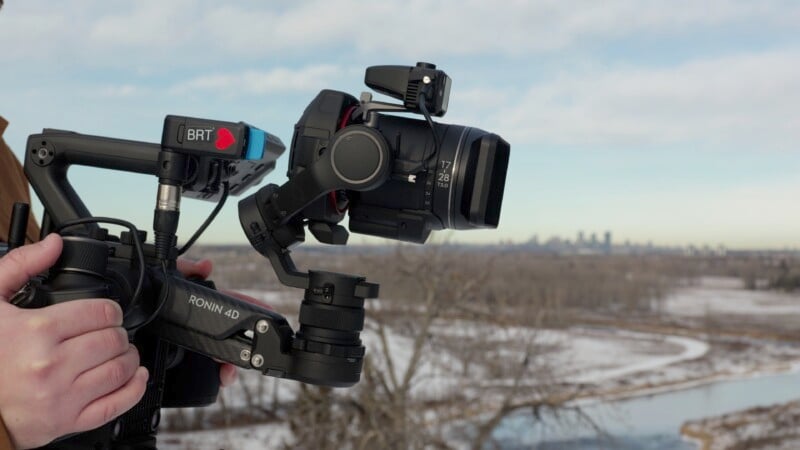
What is this thing and why does it look like a chicken head attached to a cinema camera? We did a detailed video review of the 6K model a couple of years ago, so definitely check that out for more detail but to summarize: the DJI Ronin 4D is a full-frame camera with interchangeable sensors and lens mounts. That’s pretty cool, but what sets it apart is that it is an integrated gimbal; think of it as a jumbo, full-frame DJI Pocket camera.
However, the inclusion of a fourth-axis stabilizer to counteract camera bounce makes this the most stable video platform available today. In a recent episode, we had the brilliant director/cinematographer Levi Holwell RUNNING alongside Chris Niccolls and me, and the results were simply perfect. See the intro segment below for that:
DJI Ronin 4D 8K: LiDAR is By Far the High Bar
The incredible image stabilization didn’t really surprise me, as that’s DJI’s strong suit. What I found revolutionary about the Ronin 4D is the combination of LiDAR (which helps the camera create a map of the scene in front of it) along with an amazingly flexible control wheel. LiDAR allows autofocus not only with DJI’s DL-Mount lenses but also with a mount adapter you can also autofocus Sony E-Mount lenses.

Even more impressively, with the addition of a follow focus motor (and plenty of time for calibration), you can enable autofocus with manual focus M-Mount and PL-Mount lenses. More interesting to me, though, is that LiDAR enables something DJI calls the “focus waveform.” This gives you an overhead view of your scene, with a horizontal line indicating your point of focus. It makes pulling focus between subjects incredibly intuitive and I’m shocked that this feature has not been copied in other camera systems.
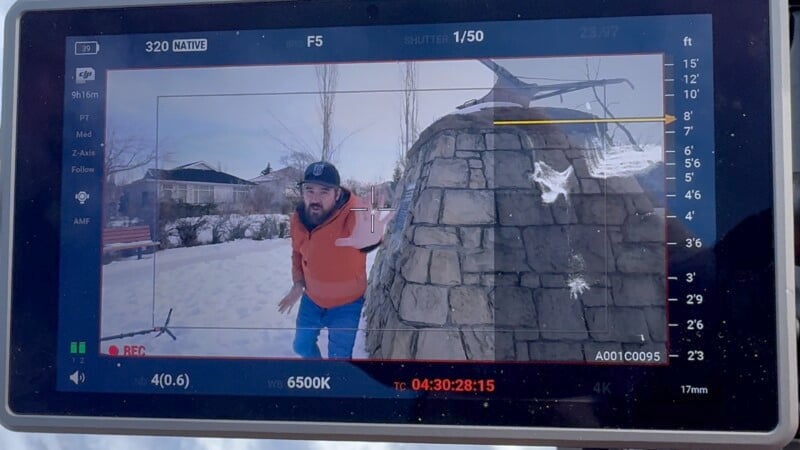
What makes this all feel even better is the control wheel on your right hand. At first, it just feels like a nicely damped focus wheel we’d see on any high-quality wireless follow focus system. Then, kick autofocus on with a LiDAR unit attached and you’ll feel the wheel moving under your thumb, with the option to override it at any time.
I was expecting this to feel weird, but it soon becomes the most natural thing in the world as you make minor corrections to focus, or correct the speed of focus transitions. And that’s just when focusing! With a power zoom lens, the same dial feels like a servo focus on a professional broadcast camera. Change your ND filter or ISO, and it suddenly becomes ‘clicky’. This control wheel is fantastic, and I want to see haptic feedback like it on all mirrorless cameras going forward. This has been out for a couple of years now, so I don’t want to hear any excuses from the other camera companies!
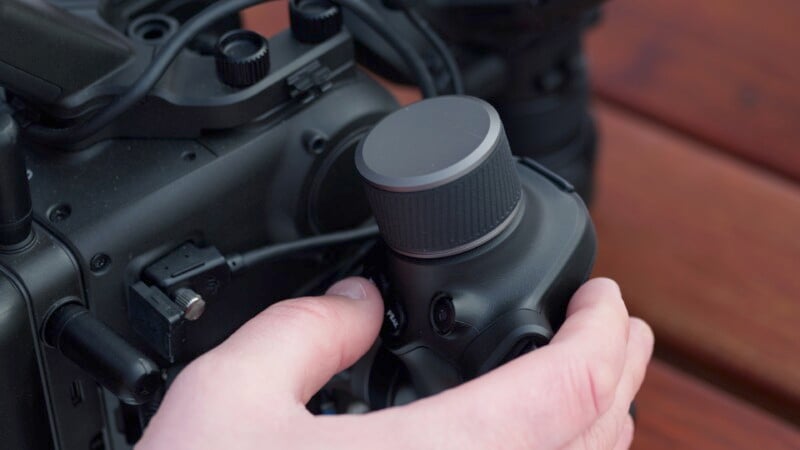
So that is all the stuff I loved about the previous Ronin 4D 6K and it still delights me on this latest unit. There are some real downsides though, and those come with regard to size and battery life. This unit weighs five kilograms (11 pounds) on its own. You will certainly feel that weight quickly if you’re not using some kind of additional support system.
Also, despite the giant batteries, you can only expect around an hour of record time each. You’ll need plenty of heavy spares, and also these cannot be charged through USB-C so you’ll need access to AC power and the charging brick to keep them topped up.
DJI Ronin 4D 8K: An 8K Upgrade That Will Cost You
But how does the new sensor perform? Incredibly well, but it gets a bit complicated.
Firstly, the 8K capture is stunningly detailed as long as your lens will resolve that much. The new DJI DL 17-28mm T3.0 was easily up to the task. However, 8K video can only be recorded in ProRes 422HQ and ProRes RAW, both of which take up absolutely mammoth amounts of storage. I truly wish DJI would provide an 8K recording option in h.264 or h.2654 like those on the Nikon Z8, Canon R5, and Sony Alpha 1 to keep file sizes down, even if it meant it was harder for our computers to process the image.
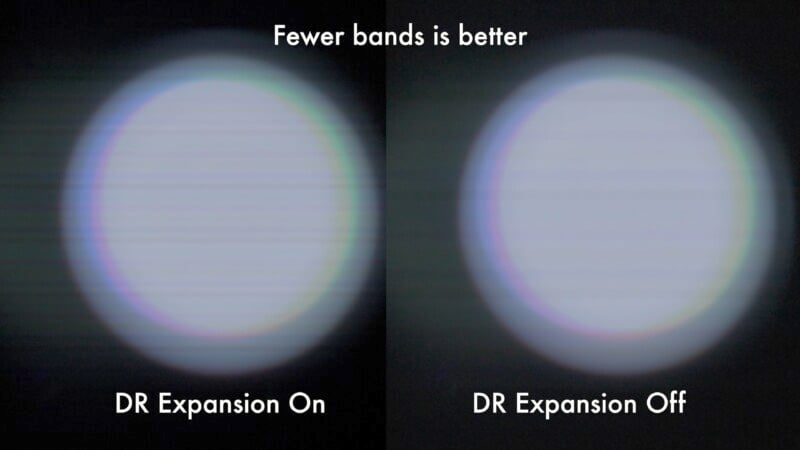
Fortunately, the 4K capture at standard frame rates is oversampled from the 8K sensor, so it is incredibly detailed. This can be captured in ProRes 422HQ, ProRes RAW, but also the very efficient h.264. This is the mode I would recommend for most shooters when the highest detail is not absolutely critical.
What is often much more important is dynamic range, and here I found the “Dynamic Range Expansion” option very interesting. This mode seems to expand the bit depth, providing a substantial jump in usable dynamic range at the expense of readout speed. It does bump your base ISO from 320 to 800, but the inclusion of built-in one to nine-stop ND filters means this won’t cause any issues.
The dynamic range with this mode enabled is some of the best I have ever seen, but the rolling shutter is very bad in exchange — among the worst of any recent camera I’ve seen. This means you’ll need to choose what’s more important on a shot-by-shot basis: the improved dynamic range with this option selected or the much faster readout speed with it disabled.
DJI Ronin 4D 8K: A Pricey Proposition
The one major concern I had when I got the details on the Ronin 4D 8K was the price. If you already have the previous Ronin 4D 6K, you can purchase the Zenmuse X9 8K sensor on its own for a reasonable $3,600.
However, if you’re planning to grab the entire camera system, it is only available in a $13,000 kit, which is nearly twice as much as the current cost of a Ronin 4D 6K. It’s important to remember that the 8K kit includes the new 17-28mm T3.0 servo zoom lens, a 7-inch wireless monitor, 1TB of storage, and other bonuses. The $6,800 Ronin 4D 6K kit only includes the camera.
That certainly helps offset the huge premium, but the Ronin 4D 8K kit is still a huge investment. That said, there’s also nothing else on the market that can do what DJI’s new camera is capable of without investing a fortune in accessories. By the time you outfit an 8K cinema camera with a large gimbal, follow focus system, and wireless video monitoring, you’ll likely have spent more than the DJI Ronin 4D 8K kit, and it’s going to be heavier and less elegant than DJI’s solution.
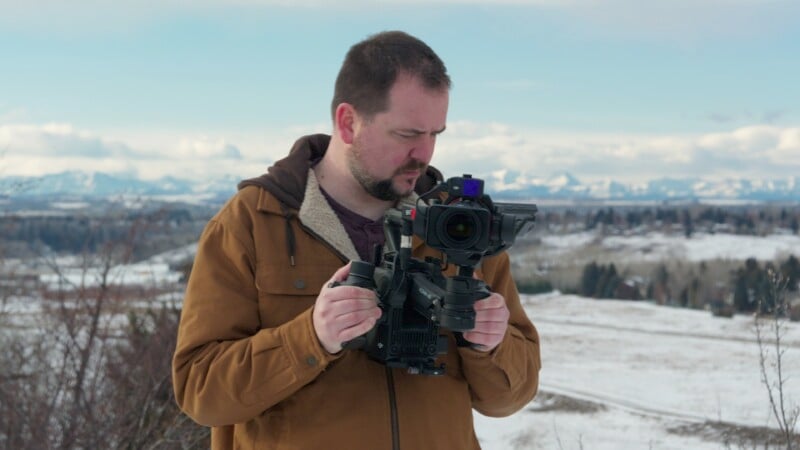
For me, the biggest testament to the power of the Ronin 4D 8K is that I was excited to take it out and shoot despite the back-breaking weight, poor battery life, and inevitable gawking onlookers. The class-leading stabilization, clever control interface, and outstanding image quality combine to offer a shooting experience unlike anything else out there. I have to ship the sample review unit back now, and I’m truly going to miss it.
Are There Alternatives?
The only alternative would be a separate gimbal and mounted camera. What makes the DJI 4D so appealing is the modularity of its Zenmuse sensors and the all-in-one solution that it provides.
Should You Buy It?
Maybe. If you pay the bills with high-end commercial video or filmmaking, the Ronin 4D 8K offers a combination of features in a single package not offered anywhere else. However, if you don’t need the absolute best stabilization currently available, save your bank account and your spine with some of the more compact, affordable cinema camera options on the market.
